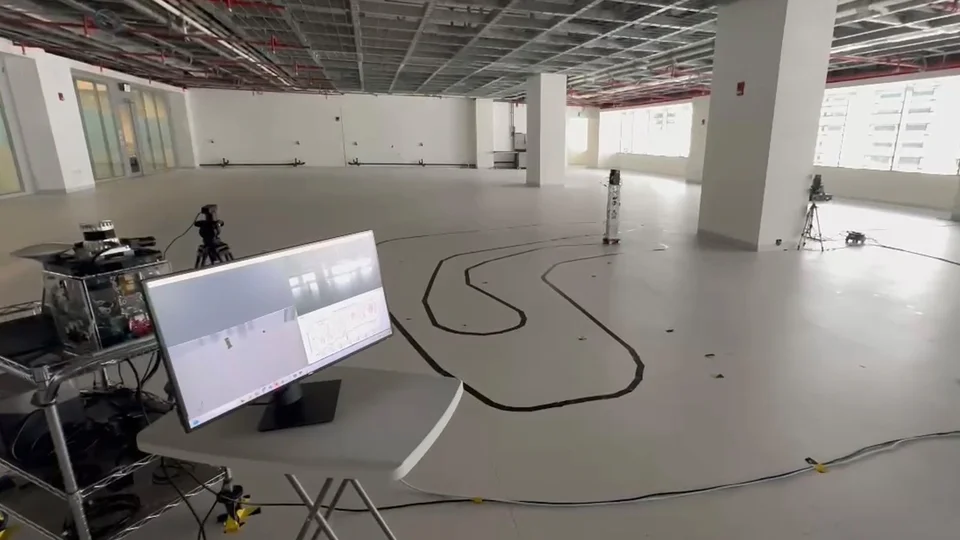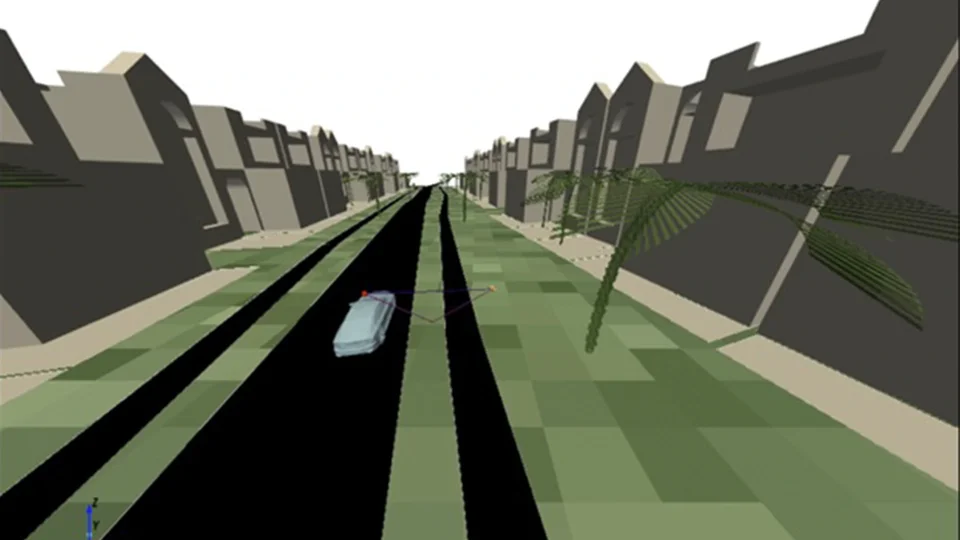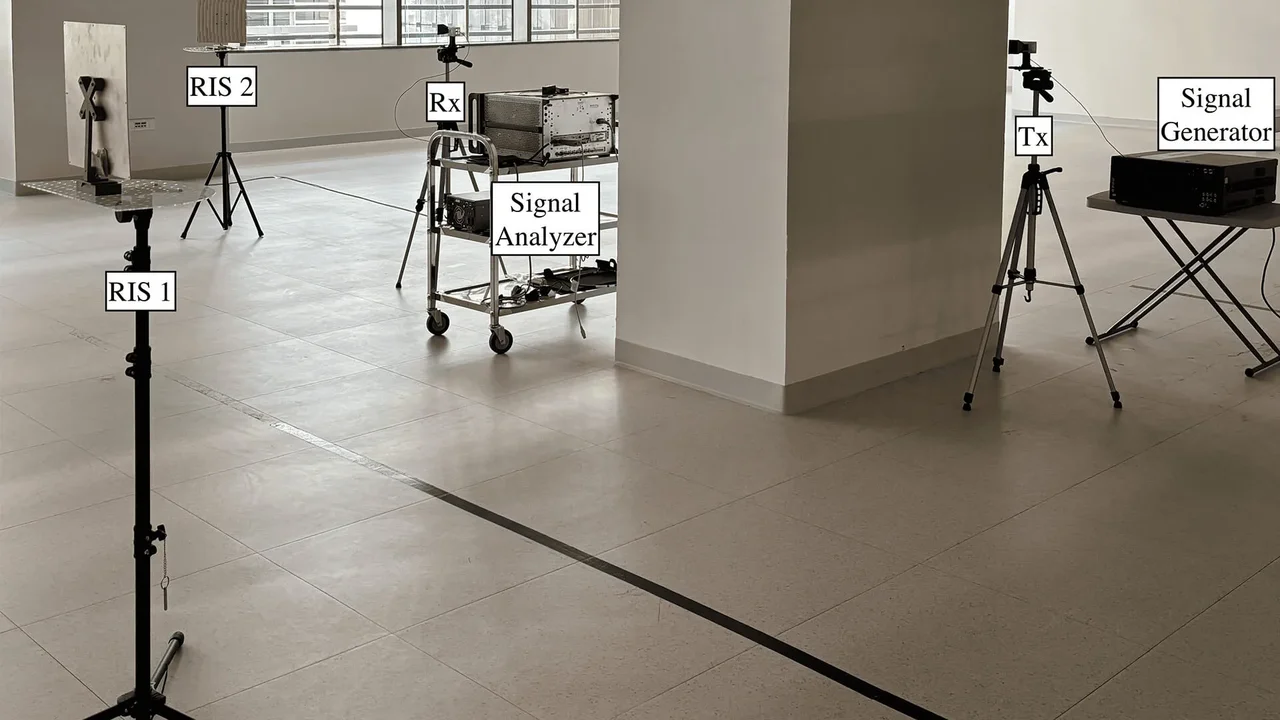
Digital Twin For RIS-Aided Systems
Overview
Beyond 5G networks are expected to deliver ultra-reliable, low-latency, and high-capacity connectivity. One of the key enabling technologies for achieving these goals is a reconfigurable intelligent surface (RIS), which is a programmable metasurface composed of many passive elements, each capable of adjusting the phase of incident signals. By intelligently controlling these elements, RIS can manipulate wireless propagation environment to enhance coverage, increase capacity, and improve energy efficiency. To accurately model the behavior of RIS within complex and dynamic environments, digital twins are used to capture realistic performance of RIS-aided systems. This work introduces digital twin framework for three RIS-aided systems in indoor environments: single RIS-aided, cascaded RISs-aided, and RIS partitioning. The proposed digital twin model is validated through experimental measurements and theoretical calculations, with performance evaluated in terms of the received signal strength indicator (RSSI).
Introduction
Beyond 5G networks are expected to deliver ultra-reliable, low-latency, and high-capacity connectivity. One of the key enabling technologies for achieving these goals is a reconfigurable intelligent surface (RIS), which is a programmable metasurface composed of many passive elements, each capable of adjusting the phase of incident signals. By intelligently controlling these elements, RIS can manipulate wireless propagation environment to enhance coverage, increase capacity, and improve energy efficiency. To accurately model the behavior of RIS within complex and dynamic environments, digital twins are used to capture realistic performance of RIS-aided systems. This work introduces digital twin framework for three RIS-aided systems in indoor environments: single RIS-aided, cascaded RISs-aided, and RIS partitioning. The proposed digital twin model is validated through experimental measurements and theoretical calculations, with performance evaluated in terms of the received signal strength indicator (RSSI).
System Model
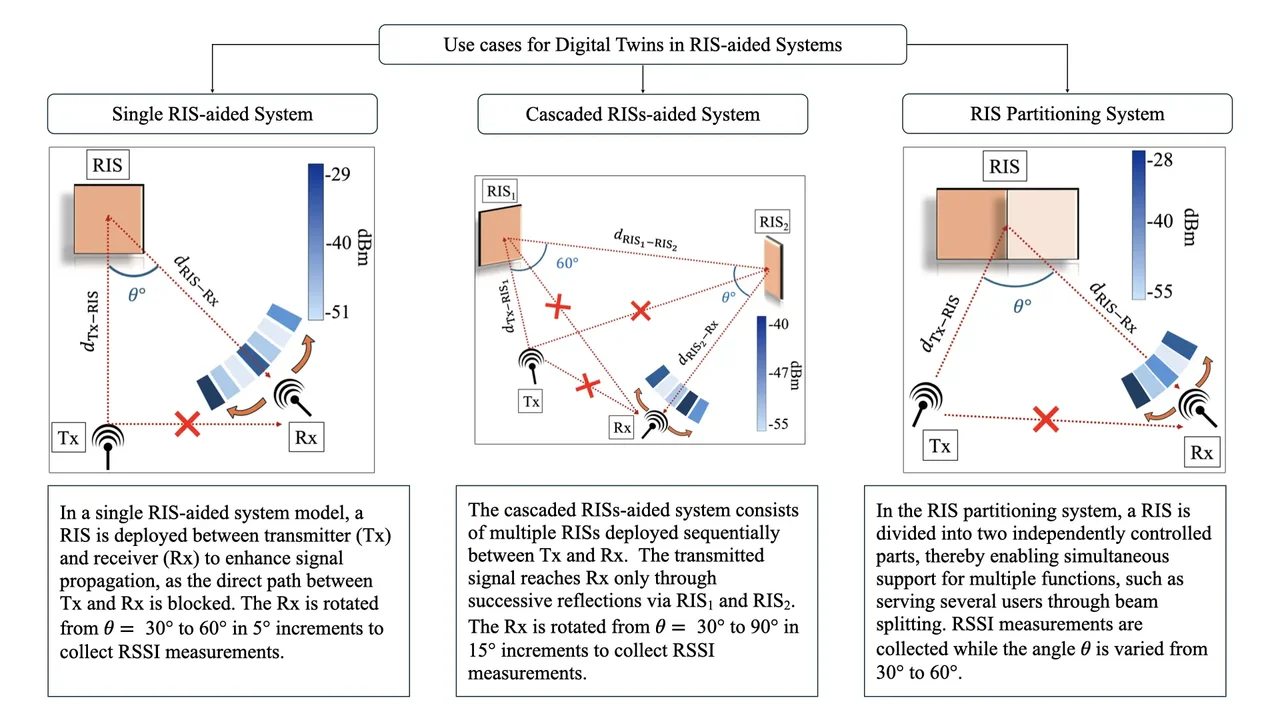
Proposed Technique
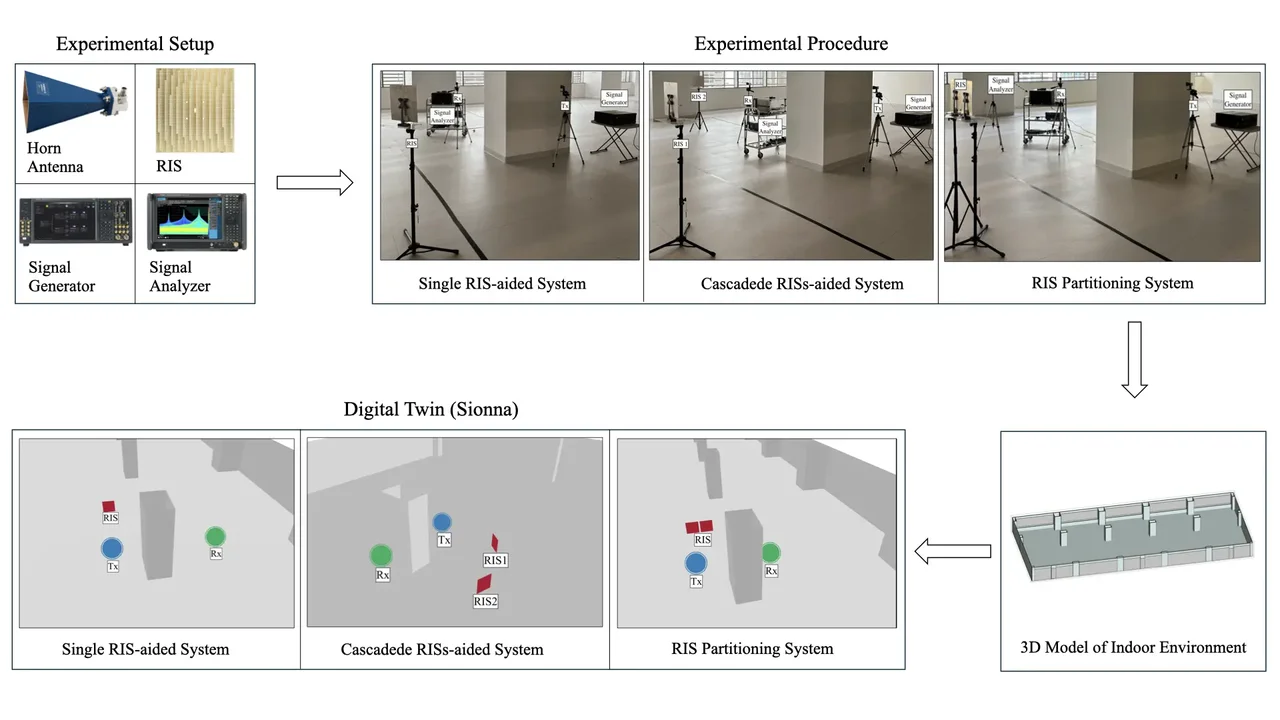
Results
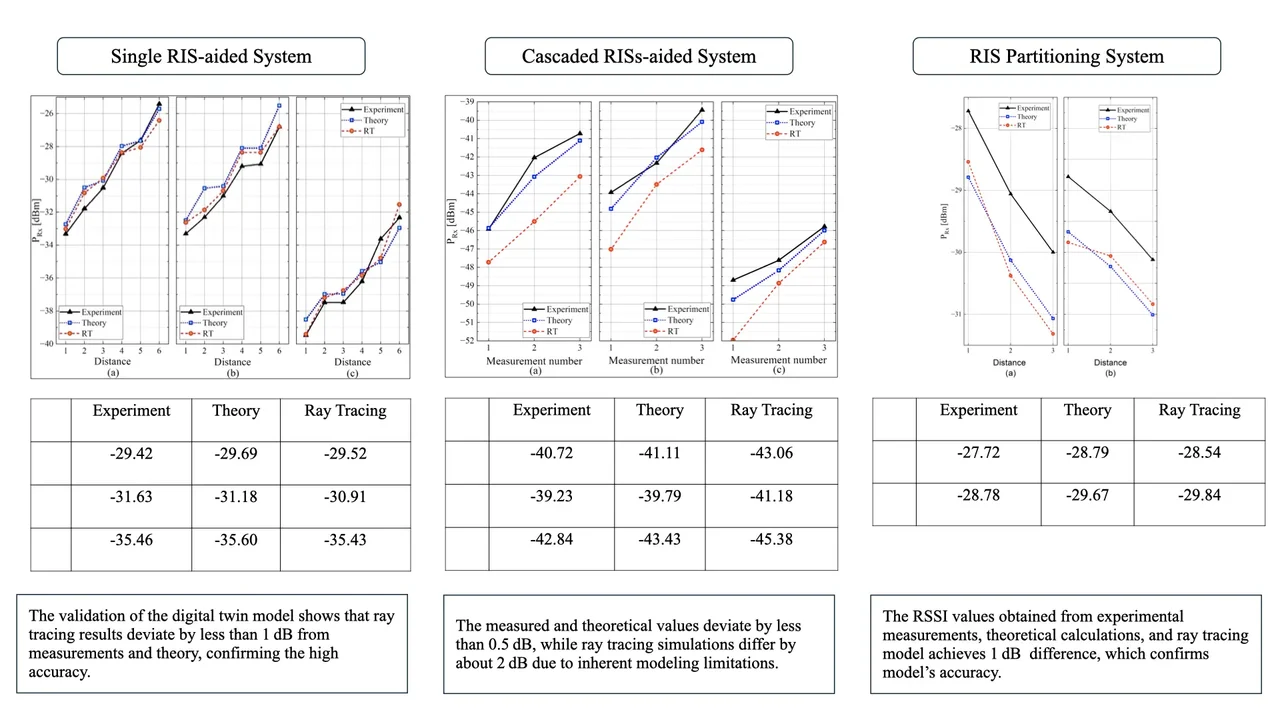
Watch Our Presentation
How to download/use the Dataset
- You can use the Python code for Sionna Digital Twin model from the following link: Coming Soon
- You can use the MATLAB code for theoretical calculations from the following link: Coming Soon
- How to use the Python and MATLAB codes: Coming Soon
Copyright
The data and results presented in this work are protected by copyright and may only be used with proper citation. Any use of this work should reference the following papers:






